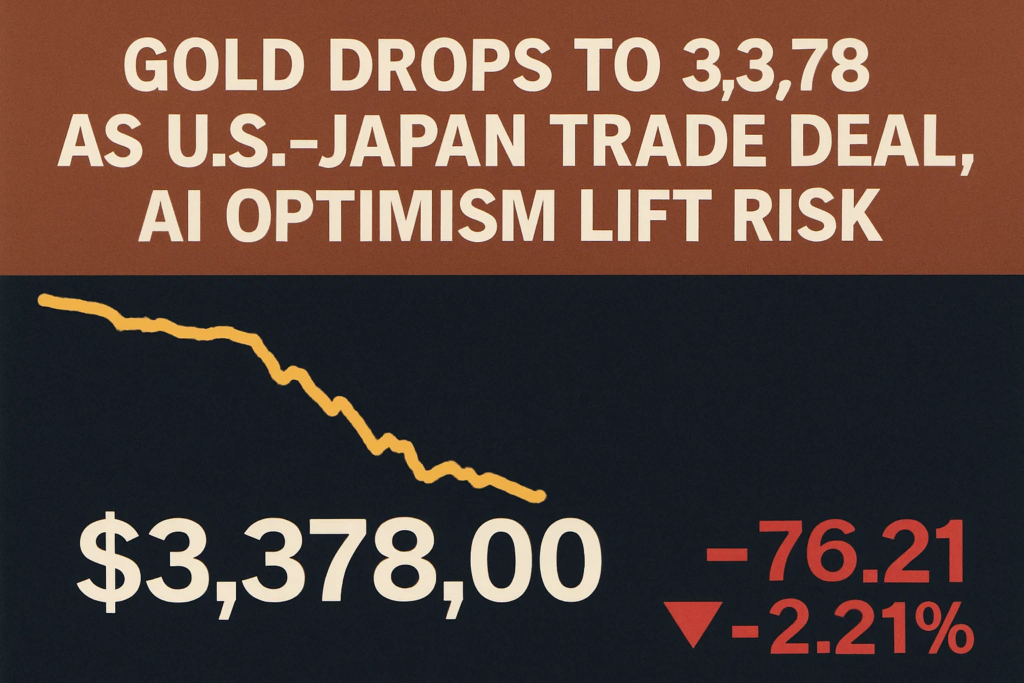Gold prices declined on Thursday as investors shifted toward riskier assets following a trade agreement between the U.S. and Japan and upbeat earnings in the tech sector. The safe-haven metal retreated from recent highs, weighed down by renewed optimism in global markets.
Spot gold fell 0.3% to $3,378.93 an ounce, while gold futures dipped 0.4% to $3,384.60 by early morning trading in Asia. After briefly climbing above one-month highs earlier in the week, the yellow metal gave back gains as market sentiment improved.
Despite this pullback, gold remains within its $3,300–$3,500/oz range—a band that has defined 2025 so far. While risk appetite has risen, concerns over economic stability in the U.S. and ongoing geopolitical tensions continue to offer gold a floor.
Trade Talks and AI Enthusiasm Pressure Metals
Investors responded positively to news that Japan and the U.S. struck a trade deal, with Washington opting for a reduced 15% tariff on Japanese exports instead of the initially proposed 25%. The decision lifted expectations that the U.S. may reach similar accords with other economies, including India and the European Union, ahead of the August 1 tariff deadline.
The improved trade outlook was compounded by strong second-quarter earnings from Alphabet (NASDAQ: GOOGL), which benefited from surging demand for AI-powered services. Additionally, President Trump signed three executive orders supporting domestic AI development, fueling a broad rally across tech stocks and pushing Wall Street to record highs.
These developments reduced demand for traditional safe-haven assets like gold, silver, and platinum:
- Spot platinum fell 0.4% to $1,416.99/oz
- Spot silver declined 0.6% to $39.0645/oz
Industrial metals, by contrast, saw continued gains:
- LME copper rose 0.1% to $9,942.75/ton
- COMEX copper advanced 0.7% to $5.8767/pound
Chinese Gold Demand Falls at Slower Pace
China’s gold consumption slipped in the first half of 2025 but at a slower rate than last year, reflecting persistent safe-haven interest even as jewelry demand weakened.
Data from the China Gold Association showed total consumption at 505.205 metric tons, down 3.5% year-over-year, compared to a 5.6% drop in H1 2024. The contraction was largely due to high prices discouraging retail jewelry purchases, though institutional demand helped cushion the fall.
Key insights from China’s H1 report:
- Jewelry demand remains weak due to elevated prices
- Institutional buying increased amid global uncertainty
- The People’s Bank of China continues to accumulate reserves
As one of the world’s largest consumers of gold, China’s buying trends play a crucial role in global price stability. With macro risks lingering, institutional support may keep bullion resilient despite short-term pullbacks.


